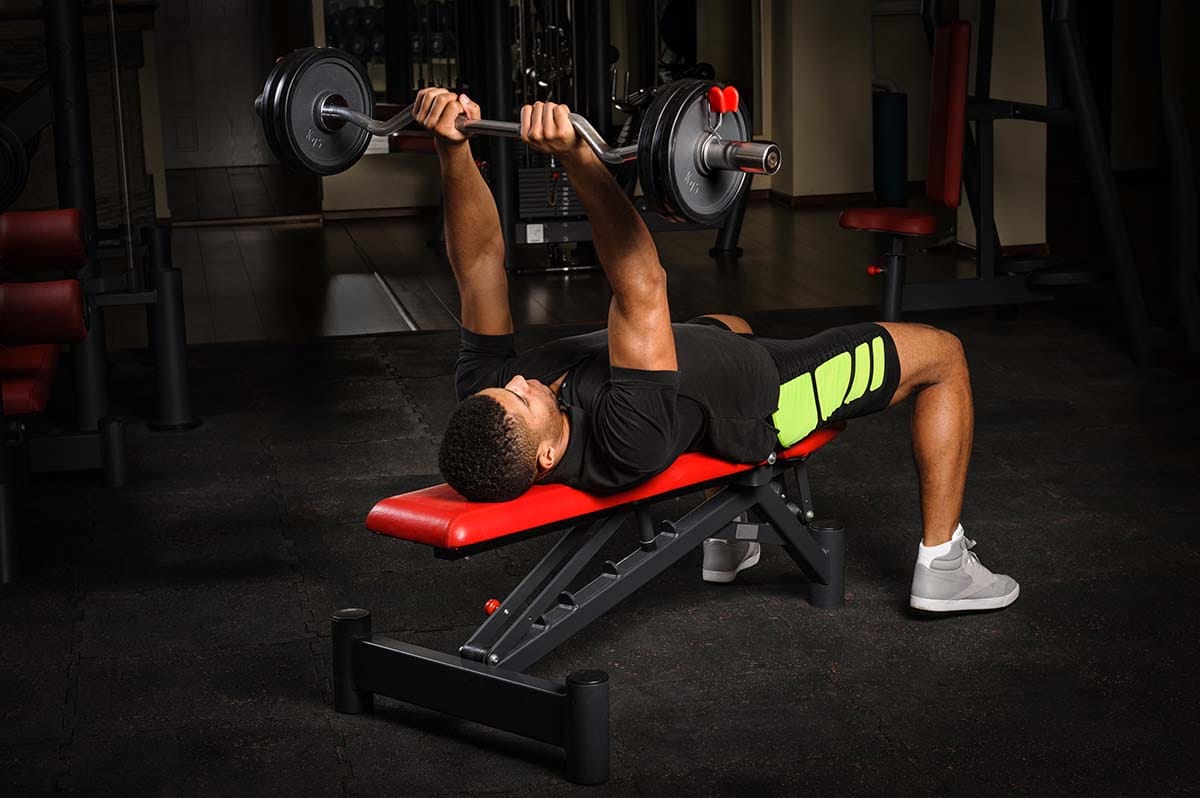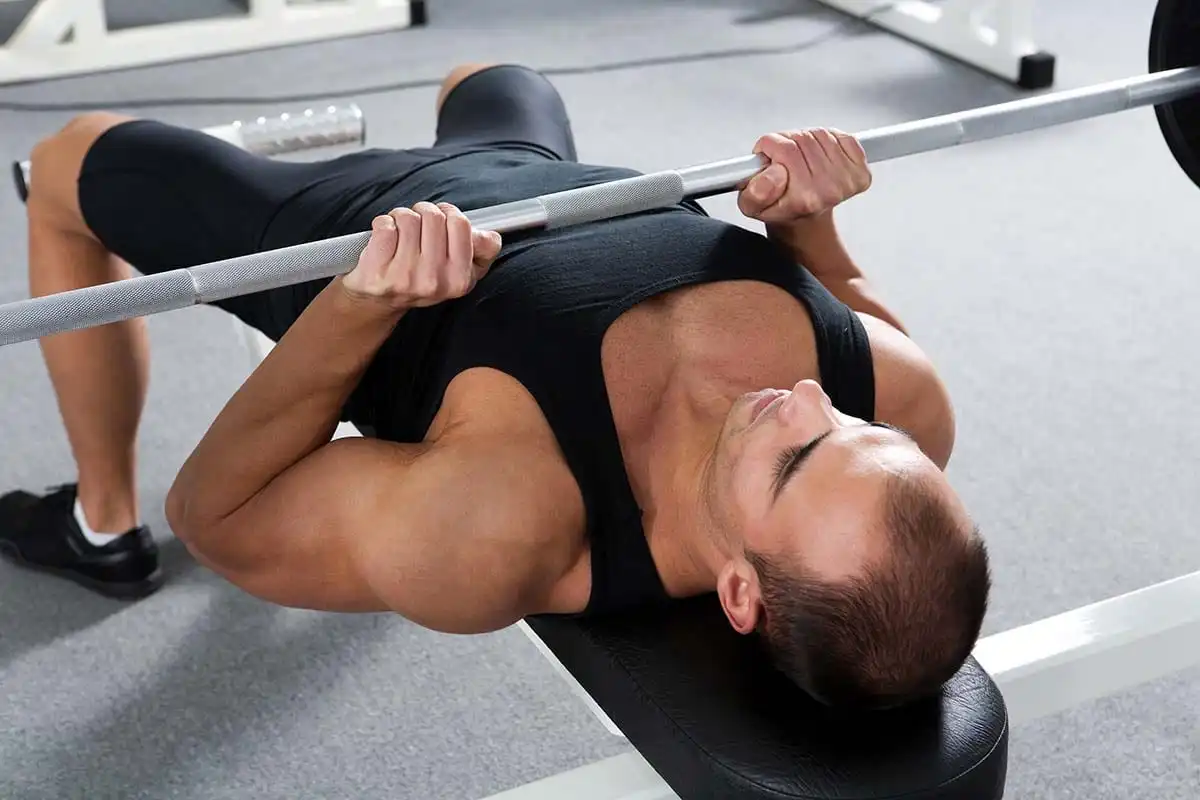Close Grip Bench Press : A Comprehensive Guide for Lifters
In this article, we'll discuss the benefits of the close grip bench press, how to nail the technique and answer some common questions. Ready? Let's get started!
The close grip bench press is up there with the most underrated exercises in the weightlifting world. Whether you're a gym newbie or a seasoned lifter, this move can seriously up your game and get you some seriously jacked triceps and strong pecs.
Why You Should Love the Close Grip Bench Press
With its ability to enhance grip stability and protect shoulder joints, this versatile lift offers benefits for lifters of all levels, from beginners to seasoned athletes. Still not sure about adding this exercise to your routine? Let’s see what it will bring.
1. Triceps Gains
If you're looking to beef up those triceps, the close grip bench press is your new best friend. By bringing your hands closer together, this compound arm exercise shifts the focus from your chest to your triceps, helping you build strong arms and chest.
Unlike other triceps exercises like tricep pushdowns or skull crushers, the close grip bench press allows you to use heavier weights, which can lead to greater muscle growth and strength gains.
2. Boost Your Bench Press
Are you looking for ways to bench more? Strengthening your triceps with the close grip variation can help. The triceps are key players in the lockout phase of the bench press, so stronger triceps mean better performance.
If you find yourself struggling to complete the last few inches of your bench press, incorporating close grip bench presses can help you power through that sticking point.
3. Shoulder-Friendly
Got shoulder issues? The close grip bench press is easier on the shoulders compared to the traditional bench press. The narrower grip reduces the amount of shoulder abduction and external rotation, making it a safer option for those with shoulder pain or injuries.
4. Versatility for Days
This exercise is super versatile. Whether you're aiming to build muscle, increase strength, or improve endurance, you can tweak the close grip bench press to fit your goals. You can adjust the number of sets and reps, the tempo of the lift, and even the type of equipment you use to keep your workouts fresh and challenging.
5. Enhanced Core Stability
Believe it or not, the close grip bench press also engages your core muscles. Keeping your body stable and maintaining proper form throughout the lift requires a strong and engaged core. This added benefit can help improve your overall stability and strength, making you more effective in other exercises and daily activities.

How to Do the Close Grip Bench Press Like a Pro
Here’s the correct way to do the close grip bench press with maximum efficiency while avoiding injuries:
- Get Set Up: Lie down on a flat bench. Plant your feet firmly on the ground and make sure your eyes are right under the barbell. Your back should have a natural arch, and your shoulder blades should be retracted and pressed firmly against the bench.
- Grip It Right: Grab the barbell with your hands a bit closer than shoulder-width apart. Find a grip that's comfy but secure. Wrap your thumbs around the bar to ensure a safe and stable grip.
- Lift Off: Unrack the bar and hold it above your chest with straight arms. Take a deep breath and brace your core.
- Lower It Down: Slowly bring the bar down to your lower chest. Keep your elbows tucked in close to your body to really hit those triceps. The bar should touch your chest lightly without bouncing.
- Press It Up: Push the bar back up to the starting position, fully extending your arms. Keep it controlled and steady. Exhale as you press the bar up.
- Repeat: Do your reps, keeping good form all the way through. Aim for 3-4 sets of 8-12 reps, depending on your goals.
Common Mistakes To Avoid
- Too Wide a Grip: A wider grip shifts the focus away from your triceps and can strain your shoulders. Stick to a grip that's just inside shoulder-width.
- Elbows Flaring Out: Keep those elbows tucked in to maximize triceps engagement and protect your shoulders. Flaring your elbows can lead to shoulder pain and reduce the effectiveness of the exercise.
- Overarching Your Back: A natural arch is fine, but don't overdo it. Keep your back safe by maintaining a neutral spine.
- Bouncing the Bar: Lower the bar in a controlled manner. No bouncing off your chest! This can lead to injury and reduce the effectiveness of the lift.

How to Get the Most Out of Your Close Grip Bench Press
Follow these tips to get the most out of your exercise:
1. Warm Up Right
Don't skip the warm-up! A good chest day warm-up starts with some dynamic stretches, light cardio, and a few warm-up sets with lighter weights to get your muscles and joints ready.
A proper warm-up increases blood flow to your muscles, improves flexibility and reduces the risk of injury.
2. Progressive Overload
To keep making gains, gradually increase the weight you lift. This principle of progressive overload is key to building strength and muscle. Aim to add a small amount of weight each week or increase the number of reps you perform.
3. Accessory Exercises
Complement your close grip bench press with other exercises that target the triceps, chest, and shoulders. Something like tricep dips, skull crushers, and shoulder presses. These accessory exercises can help address any weaknesses and improve your overall strength.
4. Eat Well
Eating well is as important as lifting heavy when it comes to building the body of a Greek god. Fuel your body with a balanced diet rich in protein, healthy fats, and carbs.
Make sure you're eating enough to support your training goals. Protein is especially important for muscle repair and growth, so aim to include a source of protein in every meal.
5. Rest and Recover
Give your muscles time to recover. Overtraining can lead to injuries and stall your progress. Aim for at least 48 hours of rest between sessions targeting the same muscle group. Incorporate rest days and active recovery, like light stretching or yoga, into your routine.
6. Focus on Form
Always prioritize proper form over lifting heavier weights. Good form ensures that you're targeting the right muscles and reduces the risk of injury. If you're unsure about your form, consider working with a certified personal trainer.
7. Track Your Progress
Find a way to track your sets, reps, and weights. Apps like the Flex App can be of great assistance in doing so. Monitoring your progress can help you stay motivated and make adjustments to your routine as needed. Celebrate your milestones and use them as motivation to keep pushing forward.
8. Listen to Your Body
Pay attention to how your body feels during and after your workouts. If you experience pain or discomfort, take a break and assess your form. It's important to differentiate between the normal soreness that comes with a good workout and pain that could indicate an injury.

FAQs About Close Grip Bench Press
1. What's the difference between the close grip and traditional bench press?
The main difference is the grip width. The close grip bench press uses a narrower grip, which targets the triceps more than the chest and is easier on the shoulders. The traditional bench press, with a wider grip, places more emphasis on the chest muscles.
2. Can beginners do the close grip bench press?
Of course! Just start with lighter weights and focus on getting the technique right before you go heavy. It's a great exercise for building foundational strength and improving your overall pressing mechanics.
3. How often should I do the close grip bench press?
It depends on your overall workout plan, but 1-2 times a week is a good starting point for most people. Make sure to give your muscles enough time to recover between sessions to avoid overtraining.
4. Which muscles does the close grip bench press work?
Primarily the triceps, but it also hits the chest and shoulders. The close grip bench press is both a compound arm and compound chest exercise, meaning it works for multiple muscle groups at once, making it a highly efficient exercise.
5. Will it help my regular bench press?
Yes! Stronger triceps can improve your performance, especially during the lockout phase of the bench press. By incorporating close grip bench presses into your routine, you'll build the strength needed to push through those sticking points.
6. Is it safe for people with shoulder issues?
Generally, yes. It's easier on the shoulders than the traditional bench press but always check with a healthcare professional if you have any concerns. If you experience pain during the exercise, stop immediately and consult a professional.
7. What are some variations I can try?
Mix it up with close grip bench press using dumbbells, on an incline bench, or with a Swiss bar. Each variation brings something different to the table. For example, using dumbbells can help improve muscle imbalances, while the incline variation targets the upper chest and triceps.
8. How can I incorporate the close grip bench press into my workout routine?
You can include the close grip bench press as part of your upper body or push day workouts. Pair it with other compound movements like the traditional bench press, overhead press, and bodyweight dips for a well-rounded routine.
Wrapping It Up
There you have it! The close grip bench press is a fantastic way to build stronger triceps, improve your bench press, and keep your shoulders healthy. By mastering the technique and incorporating it into your routine, you'll see some serious gains. Remember, consistency is key. Stick with it, and you'll be reaping the benefits in no time.
By the way, we’ve made it simple to work on customized fitness plans or to introduce a little friendly competition to your fitness community by sharing exercises with your friends. Get started for free through the Flex fitness app. Get fit with Flex!
Related articles


Get fit with Flex
Build muscle & lose weight fast for free.
Available on iPhone + Apple Watch





